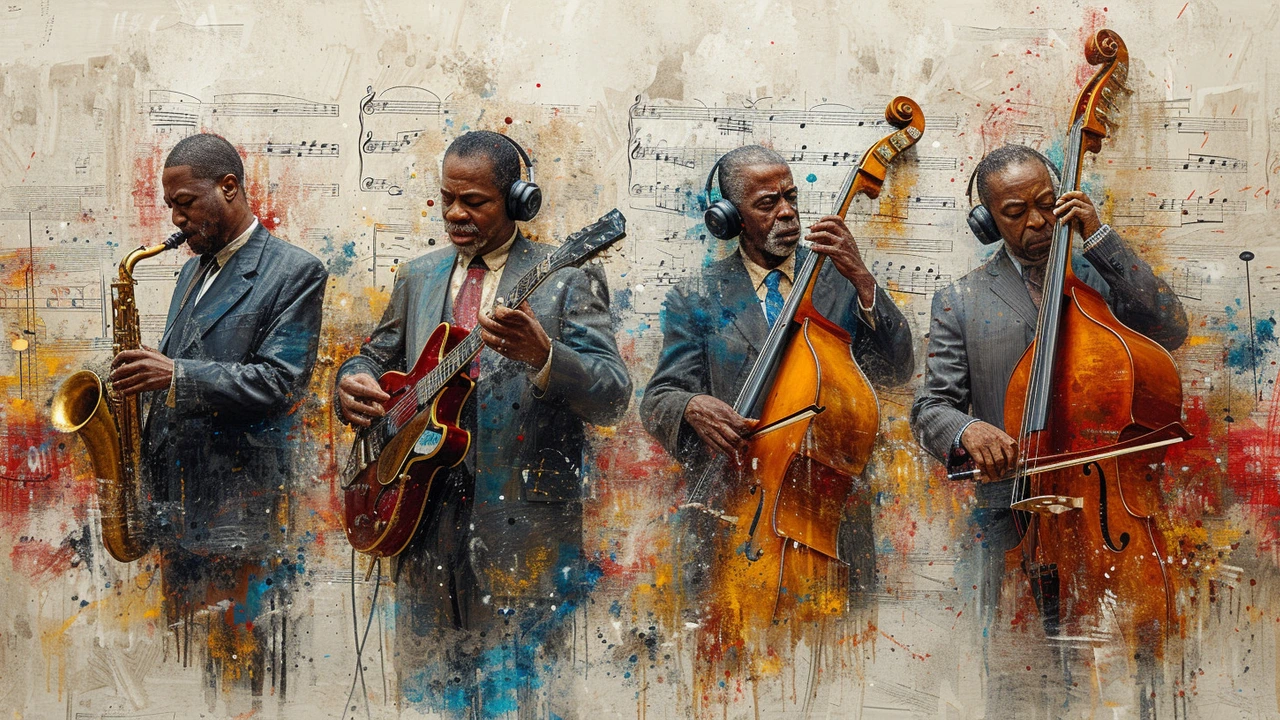The Rhythm of the Pulse: Understanding Music Genres
Music thrums through society like a pulse, beating in time with the rhythm of existence. It's there in the songs we hum in the shower, the melodies that serve as soundtrack to our most mundane moments, and the harmonies that set the stage for our grandest occasions. Music is divided into genres, shadows of sound that dance in distinctive patterns across the canvas of auditory art. Each genre forms a complex, kaleidoscopic mosaic, woven out of a multitude of different styles and sub-genres, each with its unique quirks and delights.
Building Blocks of Melodies: The Basics of Music
Before we delve deeper into these genres, let's break down the basics. All music, no matter the genre, is composed of melody, harmony, rhythm, and timbre. Melody is the series of musical tones that form the main tune. Harmony is the simultaneous playing of notes to create chords. Rhythm is the way we arrange time in music, while timbre is what makes a piano sound different from a violin, even when they're playing the same note. By manipulating these elements, composers and musicians create the vast array of genres we know today.
Classical Conundrums: Unravelling the World of Classical Music
If music were a tree, classical music would be its gnarled old trunk. Classical music is a genre steeped in tradition, with its roots reaching back to the Baroque, Classical, and Romantic periods. Symphony orchestras, chamber groups, soloists, and choirs perform this genre, it is renowned for its complex melodies, precise rhythms, and sophisticated harmonies. You might associate classical music with composers such as Mozart, Beethoven, and Bach, but the genre also includes modern composers like Philip Glass and Max Richter, proving that this genre is very much alive and well.
The Power of Pop: Dancing Through the Domains of Popular Music
Popular music, often affectionately known as pop, has a knack for worming its catchy melodies into your ear. Pop is a genre built for mass appeal, with its short-to-medium length songs, singable melodies, and simple lyrics. The Beatles, Michael Jackson, Madonna, and Taylor Swift are just some of the artists who have made significant imprints on this genre. Not only has pop produced some of the world's most beloved songs, but it also has an uncanny knack for reflecting the cultural zeitgeist of its time.
Invigorating Indie: Exploring the Independent Soundscapes
The 'indie' genre - short for independent - is a breath of fresh air in the world of music. Indie prides itself on its independence from major music labels, enabling it to carve its own distinct aural spaces. From the alt-rock soundscapes of Radiohead and the Fleet Foxes' folky harmonies, to Sufjan Stevens' electronic experimentations and Tame Impala's psychedelic riffs, indie is a vibrant tapestry of the unexpected. It's a space where artists tend to prioritize integrity of expression over commercial success—and where listeners can expect to be surprised.
Exciting Electronica: Syncing with the Synths
Enter the world of electronica, where the air is thick with the drone of synthesizers, the thump of bass, and the pulse of digital heartbeats. Electronica came into existence around the mid-20th century and has grown exponentially with advancements in technology. It's a genre that's broad and boundary-pushing, encompassing everything from ambient soundtracks and hypnotic house music, to frantic drum & bass beats and jaw-dropping dubstep wobbles. This genre owes its evolution to pioneers like Kraftwerk, Daft Punk, and Aphex Twin, who continually innovated and expanded what's musically possible with machines.
Jazz Jamboree: Improvising with Inventive Iterations
Last, but certainly not least, jazz. Genre home to some of the most fundamentally different music in existence. Jazz is the wild child of the music genres, spinning fresh stories out of improvisation, syncopation, swing, and the blues. Born at the turn of the 20th century, jazz was a radical departure from the rigid structures of classical music, breathing life and soul into harmony and rhythm like never before. From the sultry, smokey tones of Billie Holiday to the frenzied, feverish piano runs of Art Tatum, jazz continues to enthral, evolving and expanding within its many sub-genres, from bebop and cool jazz to fusion and free jazz.
In the end, genres are our compass in the vast ocean that is music. They guide us, helping to navigate the waves of melodies, rhythms, harmonies, enabling us to make sense of the chaotic cacophony that would otherwise overwhelm us. So, the next time you're listening to your favourite tune or exploring new musical territories, take a moment to appreciate the genres. To understand their language offers the wonderment of musical mastery, and connects us to the universal heartbeat of humanity.

